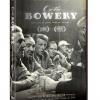All Activity
- Today
-
Bolex H16EL Conversion super16 / video assist
Tassanee Duca replied to Pontus Norberg's topic in 16mm
Hi everyone. I have several Bolex 16mm cameras, two of them are H16 EL, which I would like to convert to S16. So far I have contacted the Les Bosher laboratory in England, but from what I read on another forum, it seems that recently, many people who sent them their Bolex cameras for this conversion, then never went back... I've been trying to contact Bolex in Switzerland for a long time (it would be the best choice), but it seems they have closed their business... So, I'm looking for a good, serious and reliable laboratory that can carry out this conversion, possibly in Europe. Furthermore, I would like to know some laboratories that can offer qualified technical assistance on these cameras. So, I have these two questions: Someone know a serious and reliable lab that can convert Bolex camera to S.16? And any qualified laboratory, that offers technical assistance on the same cameras? In both cases, preferably within Europe (but if that's not possible, also in the rest of the world). Thanks. -
I am trying to get this look
Simon Osaji replied to Simon Osaji's topic in Lighting for Film & Video
So there was a typo, I meant I have 2* 1200d aputure. But I can swap them for something else if it’s not going to work for this. I am not creating the look of the second image it’s just a reference of how they’ll be seated. The top image is only the look I’m trying to create. Not sure if 12x12 from above would be enough for 8 people, I haven’t used it before or maybe a double 8x8. -
ok so it was Atomos framerate vs camera framerate mismatch, great that you found the issue! When you are shooting slow motion and there is no sync sound, your destination framerate vs the recorded file framerate does not matter at all. You will just change the rate in interpret footage settings (premiere, ae, etc) or clip settings (Resolve) to match the playback framerate to the project framerate you are finishing with. The end result will be the same you wanted if you recorded 120fps stored to 25fps file vs 120fps stored to 48fps file etc. when the playback speed of the clip is set to your target (for example 29.98) when editing the project so that all the frames are played back intact and no frames are skipped or interpolated or blended (which happens if the playback framerate does not match the project framerate). Playback speed of the recorded clip is just metadata, it is not set to stone and on most video files it can be altered on the actual raw material too by altering the metadata of the file. the actual video data stays always the same, you just tell it to play back at different fps. same thing in editing programs, you just tell the program that "this clip which the camera marked to be 59.94fps is wanted to playback at 24fps" and that's it. The clip becomes longer in seconds&minutes (because it plays back less frames per second) but there is no artifacts because no one is altering the actual video frames, just playback speed
-
Is the gate weave in these 35mm ORWO stock tests caused by ORWO's well-discussed perf pitch issues? I thought that was just in 16mm? I also did not notice the gate-weave that much in Mark's test. Perhaps Cinelab stabilized it? (Would be great if anyone from Cinelab could comment). Nevermind, I rewatched the clip in 4K and the gate weave is there. I'd be very interested in seeing it contact printed onto 3383 as well to see the quality of blacks and to see what happens to the grain. I really like the "personality" of the 35mm NC500, it might even be worth the cost increase vis-a-vis Kodak if they solve the perf-pitch issues and sort out delivery times of their film stock.
-
Yes! That did the trick! Thank you so much
-
These are earlier tests that ORWO did down at Black Hanger Studios which are available on YouTube. i did not shoot these tests but was shown them before I shot my own tests. For some reason they only tell you which stock was which at the end of the video. i have also seen some low light interior tests lit only by candlelight but I don’t think they are available online.
-
The key should wear a piece of round wire as open ring near its joint. This ring snaps into a grooved bushing of the camera which may be engraved WIND. Give the folded-down key a dry blow with the palm of your hand to attach it.
-
bump
- 12 replies
-
- anamorphic
- foton
-
(and 1 more)
Tagged with:
-
Aapo thanks so much for taking time here. I am grateful! Definitely no pulldown since the project framerate is 29.97 and footage is 29.97 VFR 120. As I understand it, the frames are 1:1 as 120 is a multiple of 30. I think I've figured it out partly. Something I missed. The Atomos YouTube demo does not advise 4K30 VFR 120. It suggests either 4K23.98 VFR 120 or 4K25 VFR 100. I tested the VFR 100 setting and it recorded the same fabric tilt footage (playback 25fps 2 minutes and 11 seconds) without a single error. Finally some light at the end of the tunnel! I just tested the suggested 23.98 VFR 120 setting and its a no-go. Lots of artifacts so unusable. So my project framerate needs to be 25 vs 29.97. Destination is Vimeo so I guess no issue. Now only need to add all the 29.97 footage to a new 25 fps project 😄
-
Karim D. Ghantous started following Orwo NC500 35mm test - by Mark Wiggins - YouTube clip
-
Hi all, I am hoping one of you with more experience can help me out with my Filmo 70DR. Earlier today I was out shooting some film when I noticed the winding key was loose. I pushed it back in and it seemed fine but when I hand the camera to my friend the key fell out. Now it seems like this is suppose to happen, but how do I get the key to stay back in without it falling out every time I tilt the camera? It had never done this before and I’m not sure exactly what I did to cause this. Any advice would greatly help me! best, Andrew
-
Daniel D. Teoli Jr. started following Back in the day, block ice was wrapped for the ice box.
-
Ad 1948 <><><><> Daniel D. Teoli Jr. Archival Collection Daniel D. Teoli Jr. Small Gauge Film Archive Daniel D. Teoli Jr. Advertising Archive Daniel D. Teoli Jr. VHS Video Archive Daniel D. Teoli Jr. Popular Culture Archive Daniel D. Teoli Jr. Audio Archive Daniel D. Teoli Jr. Social Documentary Photography
- Yesterday
-
could if there would be some lock to secure the button in the correct position. if such lock would fail it would likely destroy the camera so the friction coupling would still be good to have.
-
yes I am not a machinist but even I can tell that is not acceptable surface finish and will cause issues. the original manufacturing is of better quality, in most cases Soviets added at least the absolutely mandatory finishing touches to surfaces where it is really needed for the camera to work. If looking a Konvas gate for example, it is rough on some areas which are not touching film and are just "dead weight" but all the areas which DO touch the film are grinded and polished like they should. And the underside of the plate is, I assume, precision grinded to some tolerance which allows all the gate plates thickness being correct by 1/100th of a mm if measuring them and comparing to each other. So the soviets did care if it would had made the camera considerably worse to leave some surface unfinished. They shot propaganda with them after all, someone would probably had ended up in gulag if the camera would had messed the film because the rails being unfinished or other lazy manufacturing error 😄
- 31 replies
-
- krasnogorsk
- krasnogorsk3
- (and 14 more)
-
μεταμορφώσεις
Jeff Bernstein replied to Jeff Bernstein's topic in Students, New Filmmakers, Film Schools and Programs
[ Enter the Alchemist’s boy, Peter ] Peter [ to himself ]. What a life do I lead with my master! Nothing but blowing of bellows, beating of spirits, and scraping of crosslets. It is a very secret science, for none almost can understand the language of it: sublimation, almigation, calcination, rubification, incorporation, circination, cementation, albification, and fermentation, with as many terms unpossible to be uttered as the art to be compassed. John Lyly’s Galatea was performed before Queen Elizabeth I by a troupe of juveniles. Peter the Alchemist’s boy may have been performed by a six-year-old schoolkid. The child actor getting right this memory-feat and complicated elocution in live performance on stage—the perfecting of public speaking was, apparently, a primary reason why schoolboys were taught the art of acting in the first place—was a part of the interactive fun for the esteemed audience watching the production on New Year’s Day. The potentially treacherous phonemic stream of Peter’s speech recalls, say, Danny’s amusingly just-successful delivery of Don’t worry, mom. I know all about cannibalism. I saw it on TV. And the audience smiles. -
I hate to dog on someone's hard work, but I'm a machinist by trade, and I have to say that part is really bad. Those aren't "tight tolerances" at all; some of that looks hand-filed. The tool marks and burns on the edge of the pocket above and below the gate are one thing (a thing I would be ashamed of on a part I gave someone for free, let alone charged money for), but the tool marks on the film rails are completely unacceptable. That surface needs to be as close to glass finish as possible. I hope this is a rough prototype, because that work is on par with the original manufacturing...which I think most of us agree is not incredible. This is optical manufacturing. It can't be done on any old J-head knee mill, this needs to be either CNCd or done on a VERY stiff non-adjustable-head machine.
- 31 replies
-
- krasnogorsk
- krasnogorsk3
- (and 14 more)
-
okto simaia started following Krasnogorsk K3 focus problem S16 conversion?
-
Forgive me if I'm re-treading ground you've already covered, but couldn't you leave the camera in the run position, mechanically, and just start and stop the motor itself?
-
Seconding this. Still camera gear from Lomo, Kiev, etc has been referred to as FSU for years. I think changing the name for political reasons is pretty terrible, along the lines of the US fad of calling french fries "Freedom Fries" after the French declined to join us in bombing countries that weren't involved. The misdeeds of a country's ruler, despotic or no, don't change the nation of origin of things that country has produced, and a nationality--of items or of the laborers who built them--is distinct from a government. Rather, I think the name should be changed because it simply isn't accurate: many of these optics and cameras were made in Belarus or Ukraine.








